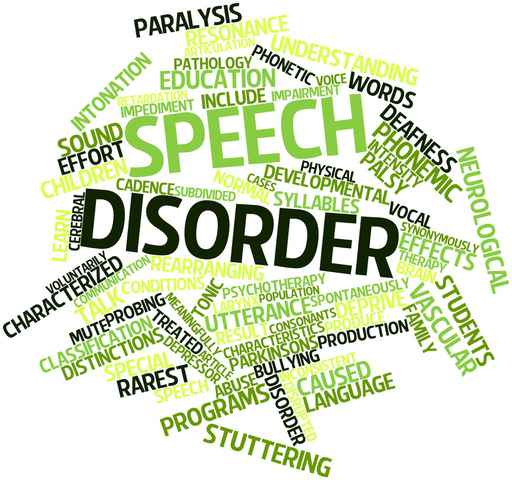Neurology in the Speech Language Pathology Field
Everything You Need to Know!
Courtney Bochicchio, Michele Tardalo, and Christine Gianotti
What is Neurology?

What is Speech Language Pathology?

The field & experts of Speech-Language Pathology
Speech-language pathology is a field of expertise practiced by a clinician known as a speech-language pathologist, they work to prevent, assess, diagnose, and treat speech, language, social communication, voice, Fluency, cognitive-communication, feeding, and swallowing disorders in children and adults.
Learn MoreClassifications of Neurology
Classifications
Learn MoreNeurological Conditions and The SLP/Audiologist

The Neurological Exam
What is a Neurological Exam?
Learn MoreNeurological Exam Tools
Learn MoreSteps of the Neurological Exam
Learn MoreTypes of Imaging
Learn MoreHow to Navigate the Nervous System
Development of the Nervous System
Disorders of the Nervous System
Intellectual Disability
Learn MoreBrain Tumor
Learn MoreAmyotrophic Lateral Sclerosis (ALS)
Learn MoreMultiple Sclerosis (MS)
Learn MoreMyasthenia Gravis (MG)
Learn MoreGuillain-Barré Syndrome
Learn MoreThe Spinal Cord, Brainstem, and Cerebellum
The Neurology of Language
The Cerebrum
Protection
The inside of the skull can be a very inhospitable place for the delicate brain.
Learn MoreHemispheric Specialization: Hemispheric Dominance & Interhemispheric Connections
Incorporated structures, language dominance hemisphere
Learn MoreBrain Plasticity
What is Neuroplasticity? How does it relate to the functioning brain? What are the Principles?
Learn MoreCerebral Function
Brodmann's Map, Lobes & what areas they occupy, Cingulate & Insular Cortex's
Learn MoreBroca's & Wernicke's Areas
Where are they located, discovered by who, & how they relate to Speech and Language
Learn MoreLanguage Disorders
Types of Language Disorders
Aphasia
An acquired multimodality language disorder; results in a deficit in the ability to produce/comprehend written/spoken language due to damage of the brain.
Learn MoreDiencephalon, Basal Ganglia, and Brain Ventricles
Emotional Intelligence
Emotional Intelligence and the SLP/Audiologist
Learn MoreTheories of Emotion
Learn MoreThe Neural Basis of Emotion
Learn MoreDisorders of Emotion
Learn MoreThe Normal Swallow
The Oral Preparation Stage
Learn MoreThe Oral Stage
Learn MoreThe Pharyngeal Stage
Learn MoreThe Esophageal Stage
Learn MoreThe Central Swallowing System
Brainstem Involvement
Learn MoreSubcortical and Cortical Controls
Learn MoreNeurology of the Cough Response
Learn MoreNeurology of Silent Aspiration
Learn MoreNeurological Swallowing Disorders
Causes of Dysphagia
Learn MoreDysphagia Causes
Learn MoreSwallowing Problems Associated with Neurological Damage
Learn MoreThe Neurology of Cognition
The Neurology of Speech
The Motor Speech System: Conceptual level
There are 8 levels of the Motor Speech System each providing a different purpose behind the neurology of speech
Learn MoreMotor Programming Level
Motor programs involve the execution of phonemes in time and space.
Learn MoreSpeech Issues
Learn MoreSpeech and Free Will
Learn MoreConsciousness and Disorders of Consciousness
Conditions Related to Discussion of Conscious
Out-of-Body Experiences & Near-Death Experiences
Learn MoreSLP, Audiology and disorders of Consciousness
Purpose: to speed emergence from coma
Systematic application of stimulation to a person’s five senses:
- Vision
- Hearing
- Smell
- Taste
- Touch
Measures electrical activity in auditory pathway as sound is introduced. Since patients with disorders of consciousness cannot respond to traditional tests of hearing non-behavioral measures must be used. ABR does not require the patient to respond

The Neurology of Hearing
Hearing
Learn MorePeripheral Auditory Stages
Learn MoreCentral Auditory Stages
Learn MoreCentral Auditory System Disorders
Learn MoreThe Neurology of Balance
Balance
Learn MorePeripheral Vestibular System
Learn MoreCentral Vestibular System
Learn MoreVestibular Disorders
Learn MoreReferences
Rouse, M. H. (2016). Neuroanatomy for speech language pathology and audiology. Burlington, MA: Jones & Bartlett Learning.

